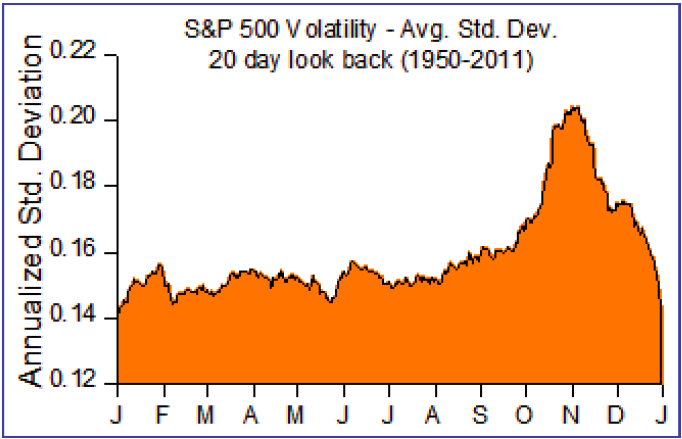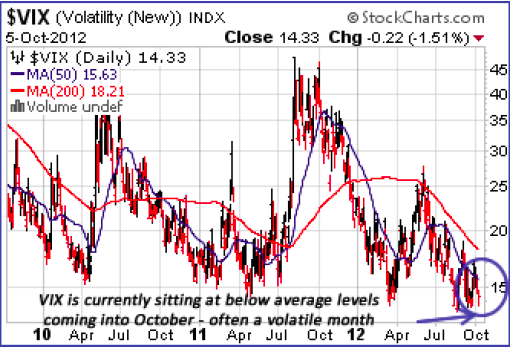“Gold is going to keep going up until the US dollar is finished. So the reign of the US dollar will come to an end.” Keith Barron, who consults with major gold companies around the world, and is responsible for one of the largest gold discoveries in the last quarter century, also said, “At that point the global collapse will be in full-swing.”
On the heels of another major country being downgraded yesterday, Barron also warned, “The real problem here is that you can’t restore confidence at this point in the cycle.” Here is what he had to say: “Europe is getting worse all the time. The IMF is now saying that European banks may have to sell off an additional $4.5 trillion of assets. At the same time, they are trying to push various governments for increased austerity measures, and it’s not working. Either the countries are simply not implementing the increased austerity or they are not implementing them to the extent that the troika wants.”
…..Keith Barron continues with his Oct 11th 2012 interview HERE
THIS MOVE WILL BE HIGHLY INFLATIONARY & WHERE TO DEPLOY CASH

On the heels of continued bank runs in Europe, today King World News interviewed one of the legends in the gold world, Keith Barron. Barron consults with major gold companies around the world, as well as major brokerage houses, and he is also responsible for one of the largest gold discoveries in the last quarter century. Here is what Barron had to say about what is taking place in Europe:
“There are a number of things happening which are quite important. The Spanish government has agreed to nationalize Bankia, which is one of the largest banks in Spain. The bank had a major run on it and so extreme measures had to be taken.
There are more banks in Spain and other Mediterranean countries that are experiencing bank runs as well. People are withdrawing their money from the banks because they are worried about the banks going bust. I would also note it is becoming much more of a certainty that Greece is going to be exiting the euro.
This is despite the fact that today there were assurances that Greece might be willing to go for more austerity.
I think if Greece goes for more austerity, you could very well see potential violent overthrow of the government. The people in Greece are really angry and they cannot take much more. The unemployment rate is far too high and it’s clear that austerity is not going to get Greece out of the hole.
With that as the backdrop, the gold price for the time being is treading water. Gold is basically bouncing around and waiting for some direction. There are a couple of things which are very critical that I expect to happen. This will impact the gold price.
The first is going to be the next Fed meeting, which is scheduled June 19th and 20th. The reason that will be such an important meeting is because the Fed is really going to have to bring in QE3 now if they intend to have any kind of impact on the November elections.
The runway for QE3 is getting shorter and shorter. If they wait until the August meeting, they will have a political problem on their hands. The Fed is supposed to be independent, and August will be viewed as too close to the election.
Another contributing factor to some upside fireworks in the price of gold will be the Greek elections. The only way to get out of this mess is massive money printing by the European Central Bank. This will be done to bail out Greece and keep the other Mediterranean countries stable. This move will be highly inflationary.
So we’ve seen the gold price being quite resilient recently. I think we’ve turned the corner and seen the bottom on both gold and the gold equities. Many of the gold equities have been knocked down 30% to 50% or even more.
There was a lot of hot money in the sector. I’ve seen this happen before. In the space between September and December of 2008, we saw the junior market get crushed in a similar fashion. By the following March it had roared back.
Obviously, for those who have cash to deploy, this is an excellent time to put that money to work. I would say this is especially the case with companies that have their dividends geared to the price of gold. That’s where I’m putting my money right now, gold and silver producers and royalty companies paying healthy dividends. You will get a double-bang for your buck, both in rising dividends, and the rising price of the equities.”
Original Source: Kind World News
We have added new segments to the KWN Markets & Metals Wrap, covering stock markets, gold, silver, trading and a plethora of other factors affecting the US & International markets. I am giving King World News listeners globally access to what has long been my weapons in researching where many of these markets are headed directionally. We cover a number of factors which can influence the global market price action.

![]() put. It’s richly ironic that an aggressive promoter of unbridled capitalism, Ayn Rand acolyte Alan Greenspan, spawned the innovation that is the biggest market intervention of all time: the Greenspan put, which gave way to the Bernanke puts of the crisis and its aftermath, and have been emulated by apt students at the ECB, in the form of its Securities Markets Program, which has been tweaked, rebranded, and relaunched as the Outright Monetary Transactions, or OMT.
put. It’s richly ironic that an aggressive promoter of unbridled capitalism, Ayn Rand acolyte Alan Greenspan, spawned the innovation that is the biggest market intervention of all time: the Greenspan put, which gave way to the Bernanke puts of the crisis and its aftermath, and have been emulated by apt students at the ECB, in the form of its Securities Markets Program, which has been tweaked, rebranded, and relaunched as the Outright Monetary Transactions, or OMT.


















